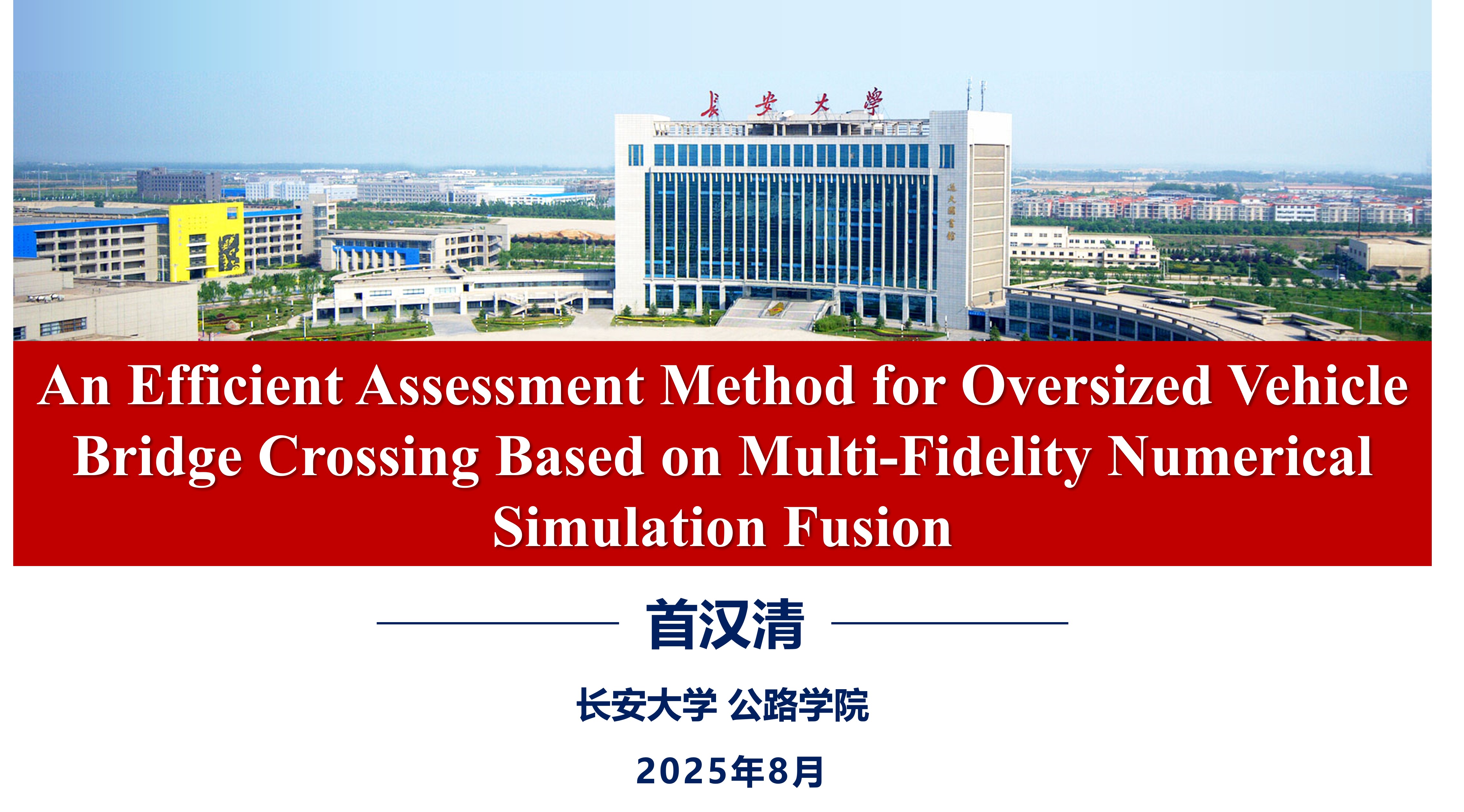- Important Date
-
August 8, 2025
Deadline for submission of conference reports
-
August 12, 2025
Deadline for conference registration submission
-
August 15, 2025
Meeting Registration
-
August 16, 2025, morning
Opening ceremony and conference reports
-
August 16, 2025, afternoon
session report
-
August 17, 2025, morning
Session report and closing ceremony
[Oral Presentation]基于多保真度数值模拟融合的大件车辆过桥高效评估方法
基于多保真度数值模拟融合的大件车辆过桥高效评估方法

Start Time:2025-08-15 20:00 (Asia/Shanghai)
Duration:10min
Session:[S1] 8月15日晚上 研究生分会 » [S1-3] 研究生分会场三
Tips: The file permissions under this presentation are only for participants. You have not logged in yet and cannot view it temporarily.
Abstract
The proliferation of oversized vehicle transport presents a significant challenge to the safety of in-service bridges, necessitating assessment methods that are both accurate and efficient. Traditional deterministic approaches are often unreliable as they neglect parameter uncertainties, while probabilistic methods, though rigorous, are computationally prohibitive due to their reliance on expensive Monte Carlo simulations, making them unsuitable for rapid engineering approvals. To address this bottleneck, this paper proposes an efficient assessment method for oversized vehicle bridge crossings based on the fusion of multi-fidelity numerical simulations.
The core of the proposed method is the development of a machine learning-driven surrogate model that integrates low-fidelity (LF) and high-fidelity (HF) simulations to efficiently and accurately predict bridge dynamic responses. By learning the mapping relationship between the computationally cheap LF influence line method and the accurate but expensive HF vehicle-bridge interaction (VBI) analysis, the surrogate model can make precise predictions. The model is trained on a small, paired dataset of LF and HF responses, incorporating key uncertainties in the vehicle-bridge system.
Validation on a typical hollow slab girder bridge demonstrates the method's effectiveness. The failure probability calculated using the proposed approach shows a relative error of only 1-3% compared to the ground truth results from high-fidelity simulations. Crucially, the computational efficiency is improved by approximately 95.3%, reducing a multi-week analysis to under 24 hours. This research provides an effective and practical solution for the rapid and reliable safety assessment of oversized vehicles crossing bridges.
Keywords
Speaker

Comment submit